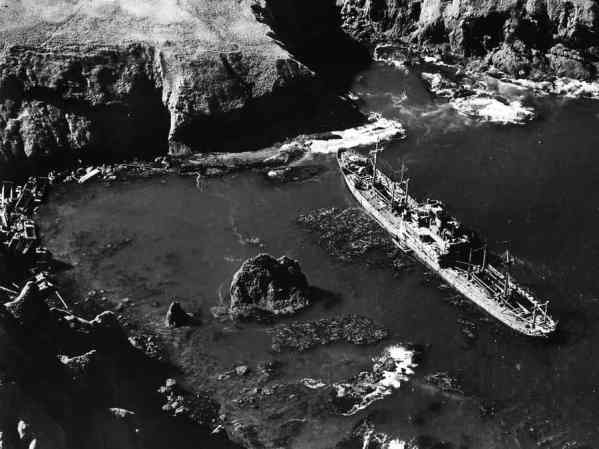
The attempt by the Japanese to take Midway Island and seize control of it resulted in one of the most decisive naval battles in military history, with the Japanese losing four aircraft carriers and the United States gaining the upper hand in the Pacific. But a diversionary effort by the Japanese during the campaign marked the only ground fighting on U.S. home soil during World War II.
The Japanese attack on the Aleutian islands off Alaska in June of 1942, a mere six months after Pearl Harbor and shortly after a series of disastrous U.S. defeats in Asia, was meant as a feint to draw away American forces while the Japanese invaded Midway island. It would also threaten any U.S. attempts to attack Japan using the chain as a base. The archipelago of over 150 islands reached to within just 750 miles of Japanese territory and was seen as a real threat to their homeland. The occupation of U.S. soil, even that as remote as the Aleutian islands, also served as a blow to American morale.
U.S. intelligence was alerted of the impending invasion, but despite sightings of the approaching Japanese fleet, terrible weather made tracking it impossible. The Japanese carriers with the fleet bombed U.S. positions at their Dutch Harbor island base, inflicting heavy damage. American attempts to counterattack and destroy the fleet were consistently foiled by bad weather. The islands of Attu and Kiska in the chain were both occupied by June 7, 1942, though again severe storms and fog led to canceling the seizure of other islands.
The conquest of U.S. soil, even that as remote as the Aleutian islands, came as a severe shock to the American public. There was widespread speculation that the islands would be used as a jumping off point for attacking Alaska, or more fantastically the American mainland. Much of this apprehension was relieved by the destruction of the main Japanese carrier fleet at the Battle of Midway, defeating much of the purpose of the invasion. The Japanese forces found themselves practically marooned in some of the most hostile conditions imaginable.

With no logistical ability yet available to retake the islands, the U.S. could only harass the Japanese garrisons and the convoys resupplying them. U.S. air raids and submarine attacks took a heavy toll on Japanese shipping, but it was not until March of 1943 and after the naval surface action at the Battle of the Komandorski Islands that much headway was made. After the battle, the Japanese were reduced to using submarines to resupply their troops on the islands.
When the joint U.S.-Canadian operation to retake Attu began in May 1943, the Japanese soldiers retreated to high ground rather than contest the landing. The following bloody battle, with both sides plagued by chronic supply shortages, frostbite, and disease, dragged on for over two weeks. The Japanese garrison, starving and running out of ammunition, launched a massive banzai charge that penetrated all the way to U.S. rear echelon before being stopped. Over 2,000 Japanese dead were counted afterward, along with a minuscule 28 survivors. More than a thousand Americans died in the battle.
The assault on Kiska on August 15, 1943, was much more anti-climatic. A huge American-Canadian force landed there after weeks of bombing, but after much searching found the island deserted. The Japanese had used the cover of fog to bring in ships to evacuate two weeks earlier. The bombing and infantry attack had all been against a barren rock, and the only allied casualties were from friendly fire in the fog, frostbite, and disease. The Japanese withdrawal marked the end of the first and last foreign occupation of U.S. soil since the War of 1812.
The reality was that the remote, sparsely populated volcanic islands with notoriously bad weather and terrain would never serve as a major invasion route for either side. Though the Japanese garrisons managed to maintain themselves in the harsh conditions, they had nowhere near the numbers or the support to launch an invasion onto the mainland, and their primary goals were crushed by the disaster at Midway. U.S. plans to use the island chain as a launchpad for invading Japan never materialized beyond some bombing raids on Japan’s northern Kuril islands.
In the end, the atrocious weather and remote location turned what seemed such a promising strategic theater useless for everyone.










